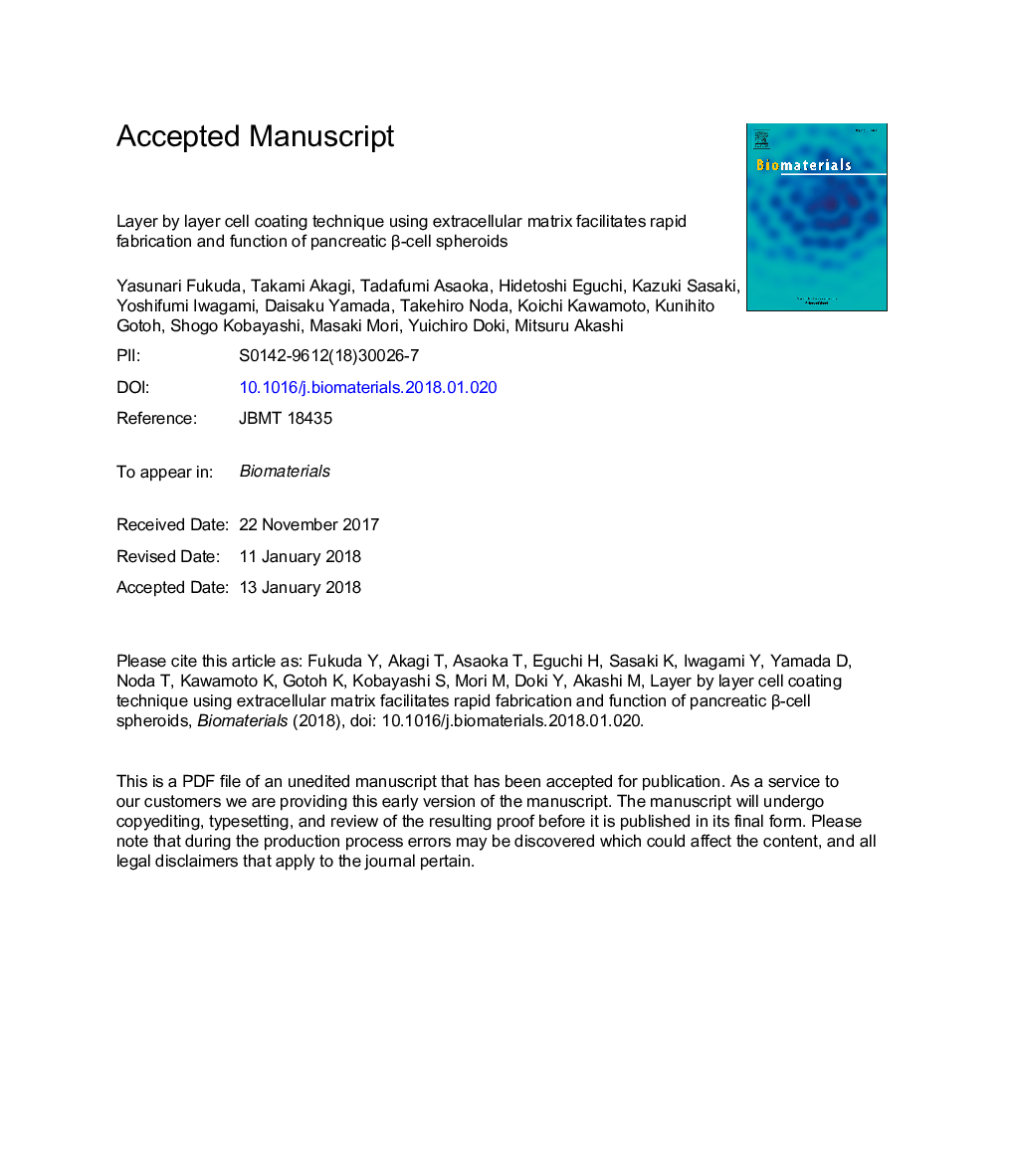| Article ID | Journal | Published Year | Pages | File Type |
|---|---|---|---|---|
| 6484656 | Biomaterials | 2018 | 41 Pages |
Abstract
Tissue engineering of insulin-secreting cells using alternatives to islet transplantation has been fueled by the development of available materials and fabrication techniques. We have established a cell coating technique that enables the cell surface to be coated with extracellular matrix based on the concept of a layer-by-layer (LbL) assembly. The present study evaluated whether this technique is beneficial for fabricating pancreatic β-cell spheroids using a mouse β-cell line. The well-structured and dense spheroids could immediately be constructed by the LbL-coated cells. In the functional analysis, spheroids with the LbL-coated cells had greater insulin secretion ability with increased expression of the insulin and glucose transporter 2 genes versus spheroids with non-coated cells. In addition, we found that the expression of connexin 36, a gap junction molecule, was upregulated by the LbL cell coating. When spheroids with the LbL-coated cells were syngeneically transplanted in diabetic mice, blood glucose levels immediately decreased and glucose sensitivity significantly improved after intraperitoneal glucose stimulation compared to spheroids with non-coated cells. This cell coating technique would be a clinically applicable approach for fabricating pancreatic β-cell spheroids and treating type 1 diabetes mellitus.
Related Topics
Physical Sciences and Engineering
Chemical Engineering
Bioengineering
Authors
Yasunari Fukuda, Takami Akagi, Tadafumi Asaoka, Hidetoshi Eguchi, Kazuki Sasaki, Yoshifumi Iwagami, Daisaku Yamada, Takehiro Noda, Koichi Kawamoto, Kunihito Gotoh, Shogo Kobayashi, Masaki Mori, Yuichiro Doki, Mitsuru Akashi,
